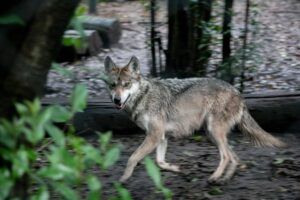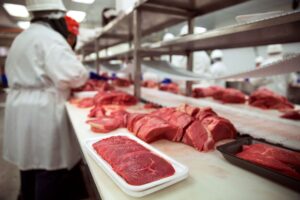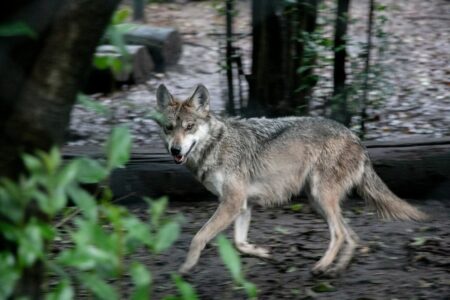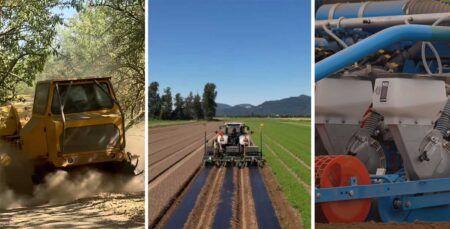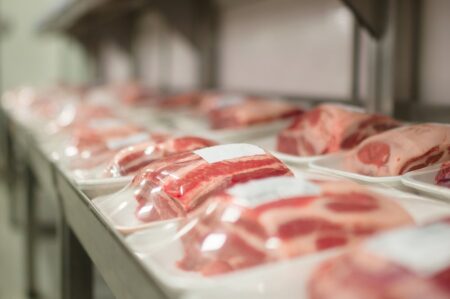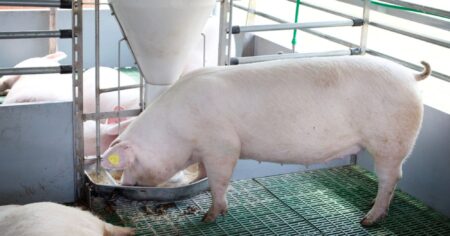By Brooklyn Draisey
Iowa State University (ISU) researchers have unlocked new secrets within the bacteria responsible for the creation of thousands of fruits and vegetables as we know them today, with the goal of seeing how they can balance its uses as a tool versus its prevalence as infection.
Kan Wang, an ISU professor of agronomy and biotechnology, and students have released a paper detailing how they investigated the chromosomes of Agrobacterium tumefaciens, a bacterium responsible for crown gall disease in plants and the most crucial instrument in genetically modifying crops.
Using gene editing tools they tailored to their needs, Wang said the team manipulated Agrobacterium chromosomes and found that by rearranging its DNA, scientists can impact how well the plant grows, its resiliency and ability to infect plants.
“It’s our bread and butter for biotechnologists — for us,” Wang said.
Agrobacterium Enables Natural, Human-Led Genetic Modification
Evidence of crown gall — a disease implanted by Agrobacterium that causes bulging tumors to grow on plant roots and stems — can be found all over the world, Wang said, with her own family finding the growths on trees in Seattle, Iowa City, and the Czech Republic.
The earliest mention of crown gall comes from Italy in the late 1500s, Wang said, and efforts to address the disease in the U.S. go back to the early 1900s. As technology progressed, so did researchers’ work to learn more about Agrobacterium and its mysteries, with Wang starting her own research into the subject during her time studying at the University of Ghent in Belgium in the 1980s.
It was while she was studying as a graduate student that her professor found that Agrobacterium has the ability to “deliver its own DNA into the plant and then integrate into their chromosome,” which is something no other bacteria can do. From there, researchers found they could, through gene editing, “disarm” the genes that cause tumor growth in plants and replace it with a different gene of interest.
It was these findings that paved the way for genetically modified crops, which are changed to become more resilient to stress and attack or encourage certain traits. According to the Food and Drug Administration, most corn and soy grown in the U.S. are GMO crops, as well as cotton, canola, and sugarbeets.
“All (of) the GMOs on the market were made by Agrobacterium,” Wang said.
Around 2,000 plant species, from black pepper to persimmons to strawberries, have also been identified as N-GMOs, which Wang described as plants that were infected in the past by Agrobacterium and became the dominant crop through domestication or other means.
One example Wang gave of this was the sweet potato. Researchers found out that all domesticated species of the root vegetable have Agrobacterium, but wild species do not. The Agrobacterium caused the sweet potato to bulge, a trait Wang said was likely preferred by those harvesting the vegetable due to it providing more food.
“It’s a horizontal gene transfer, which occurs naturally, and in this case happens to be Agrobacterium,” Wang said.
Untangling Chromosomes
Thoughts of the past and lingering questions were drivers in this study, Wang said, as those who made earlier milestones in Agrobacterium research did so without the technology currently available.
The research team started their work by swapping out components of a gene editing tool previously tailored to research E. coli to ensure it would work for their purposes. After that, Wang said, they could “play around” with Agrobacterium chromosomes, deleting certain genes and adding others in.
Wang, a knitter when she isn’t conducting her work, said going through chromosomes is like having to untangle a pile of yarn that got mixed together — time-consuming and complicated.
Agrobacterium has both circular and linear chromosomes, which Wang said caused curiosity as most bacteria have only circular chromosomes. The team also found a variant in the bacteria that had its chromosomes fused together into a large, linear chromosome, and tested it against the original setup and two other variants they created with the gene editing tool.
The variants had different levels of success in infecting plants, Wang said, and varying resiliency. They found that Agrobacterium with fused chromosomes were better at replication and stronger in growth, but could not infect plants as well as variants with separate chromosomes.
Wang’s drive to keep studying Agrobacterium is two-fold, she said, and split between finding real-time solutions to disease and development of technology to improve the tool the bacteria has become.
“The more we know the bacteria, their lifestyle, their biology, maybe we can come up with a more effective biocontrol for them to not to become such a headache for vegetable and fruit farmers right then,” Wang said. “On the other hand, Agrobacterium is also a tool for us. So we want to see, okay, can we learn more from their behavior so we will know how to improve our tools for biotechnology.”
Even with all of the breakthroughs scientists have made with Agrobacterium, Wang said she’s excited to keep diving into the bacteria and other plants it has infected and changed.
Agrobacterium has shown up where it wasn’t expected, such as in hydroponics equipment used to grow tomatoes, and much is still unknown about what triggers the bacteria to leave the soil and enter plants. Wang said next steps are to apply for funding to continue with the work.
“The more we learn (about Agrobacterium’s) ability, their biology, then the more effective we can think about ways to compete (with) the pathogenic bacteria,” Wang said.
Iowa Capital Dispatch is part of States Newsroom, a network of news bureaus supported by grants and a coalition of donors as a 501c(3) public charity. Iowa Capital Dispatch maintains editorial independence. Contact Editor Kathie Obradovich for questions: [email protected]. Follow Iowa Capital Dispatch on Facebook and Twitter.


